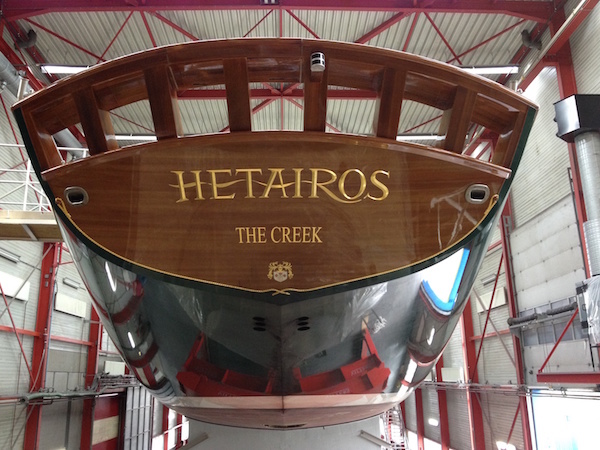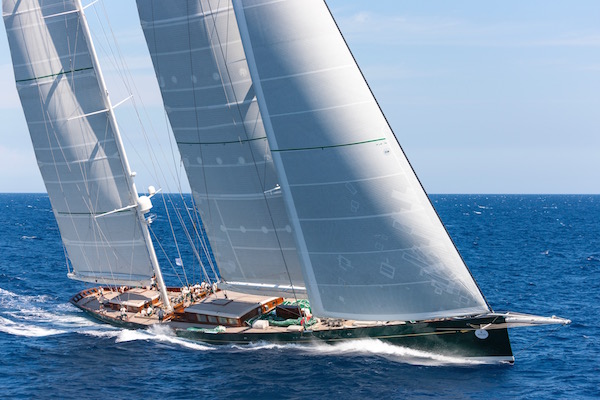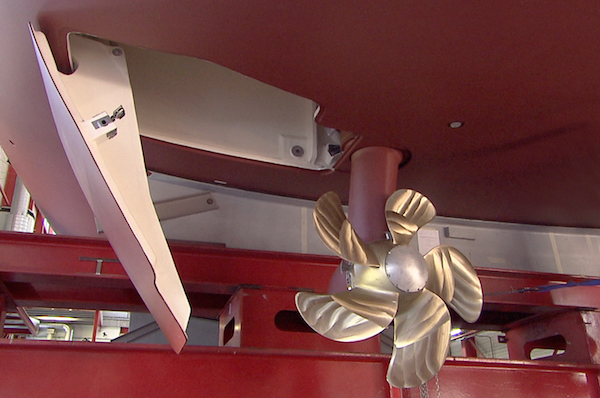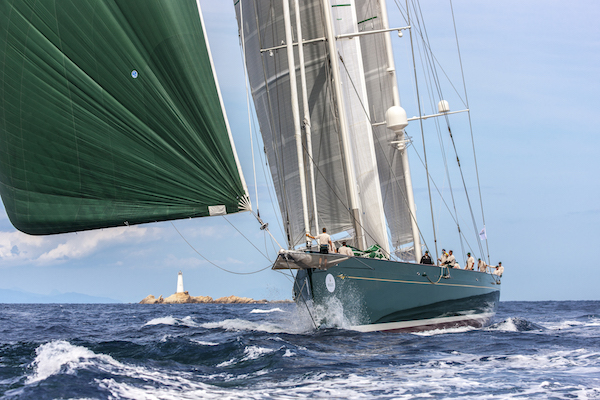Performance redefined
Following a 15-month re-engineering project at Vitters, the 67m carbon ketch 'Hetairos' has been causing a stir on the regatta circuit. Bryony McCabe was invited to sail on board in Palma de Mallorca to speak to the key personnel involved.…
Arriving at Vitters in the spring of 2014, Hetairos underwent 15 months of extensive works, including the re-engineering and rebuilding of the propulsion system, the power generation and electrical systems, all hydraulics, waste-water and climate control, data networks and the control system.
The brief for project manager Patrick Yeoward of McMaster Yachts was to get the systems within this exceptionally built lightweight carbon structure running reliably to allow for her potential to be realised. “There was a very specific reason the boat was built – the owner wanted to go long-distance cruising but he also wanted to be able to race competitively,” Yeoward explains. “He has done both a lot in the past with his previous yachts; this time he wanted to do it with a boat that was really cutting edge.”
For Vitters, the Hetairos project had some complex facets to it, which made it especially challenging for the team. “The propulsion technology, in combination with the hydraulic system, while keeping everything as lightweight as possible, were the unique points of interest for us,” reflects Louis Hamming, managing director of Vitters. “It was an incredibly complex project and the experience and knowledge gained have been invaluable not only to the yard but to the superyacht industry as a whole.”
Power generation and electrical systems
In order to ensure reliable, safe, economical and long-term engine operations, two Scania 405 engines and two separate generators for electric power were installed to break up all the power demands. With Scania engines proven to be highly reliable, type approved and able to provide rated power with excellent torque characteristics and low fuel consumption, while also being able to operate under the required inclination angles of a sail boat, they were well suited for Hetairos.
Alongside the engines are now two generators: one of 75kW that is solely an electrical supplier and the other of 90kW, which supplies both electrics and hydraulics. “The boat can be run on the small generator when motoring and for the majority of small manoeuvres,” advises Yeoward.
“On the other generator there is a hydraulic pump and there is a balance between electrical demand and hydraulic demand. There is also a power management system to decide which is the dominant demand so that one can’t knock the other out.” The end result is a simple and trouble-free method of ensuring a constant power supply when required.
Propulsion concept
The new engines drive a completely new design of retractable thruster pods, which are shaft driven directly by the engines, resulting in a very efficient propulsion system. The drive-legs have the ability to turn 90 degrees, meaning they act as the boat’s stern thrusters as well.
With maximum speed under sail being one of the key design parameters, using these drive-legs as main propulsion devices mounted in an inboard-box enables the yacht to reduce drag by retaining a clean, flush underwater shape when the drives are not being used, thus allowing the yacht to reach higher speeds.
Hydraulic systems
Because the duration of sailing manoeuvres depends on the speeds of the hydraulic consumers, such as winches and cylinders, a reliable high-performance hydraulic system is crucial on a boat with sailing expectations such as those of Hetairos.
The main factor in bringing the system up to the requirements of the consumers was enlarging the hydraulic ring main that ran around the whole boat in order to enable enough oil to supply these demands – essentially replacing the whole backbone of the hydraulic system on board.
Working from a plan produced by naval architects Dykstra for all sailing manoeuvres on the boat, the yard could fully understand the functionality that was required and was able to gear the hydraulic system to fit it. With the maximum flow requirement of the hydraulic system occurring while regatta sailing during gybing and tacking manoeuvres, the calculated requirement for the oil-flow during these manoeuvres goes up to 875 litres per minute.
With these changes in place, the end result of building a boat of Hetairos’ size with such sailing potential is phenomenal. One of the most pivotal moments for the team was shortly after her relaunch in June 2015, in time for the Maxi Yacht Cup, where she famously held her own upwind against the latest and greatest monohull Comanche.
“We wanted the boat to come out in all her glory and to get her to Porto Cervo for the Maxis was really quite an achievement – I think we surprised a lot of people,” concludes Yeoward. “It takes a very special type of person who is prepared to really teeter on the edge of technology and push everything and everybody.”
This is a short preview taken from an article in Issue 169 of The Superyacht Report. To read the full article, please download the magazine here.
Profile links
Click here to become part of The Superyacht Group community, and join us in our mission to make this industry accessible to all, and prosperous for the long-term. We are offering access to the superyacht industry’s most comprehensive and longstanding archive of business-critical information, as well as a comprehensive, real-time superyacht fleet database, for just £10 per month, because we are One Industry with One Mission. Sign up here.







